One of the keys to being a consistently successful turkey hunter is understanding the behavior and habits of the game you are pursuing. That means knowing where they like to roost, where they’ll spend the day, and where they’ll be finding food. As a turkey hunter, you need to know the natural food sources for turkeys. It just makes sense. And since the majority of a turkey’s waking hours are spent in search of food, every serious turkey hunter — whether chasing them in the spring or the fall — should have an understanding of what turkeys prefer to eat at any given point in time.
Turkeys are very generalized feeders. In fact, it would probably be easier to list the things turkeys don’t eat! Renowned turkey biologist and author of Wild Turkey Hunting and Management, Lovett E. Williams Jr., wrote, “Turkeys are among the most resourceful feeders, consuming hundreds of different kinds of insects, other small animals and plant parts, including almost everything that is edible and some things that are not.” But, to be a little more specific, research by Texas A&M University revealed that the diet of a wild turkey consists of approximately 36 percent grasses, 29 percent insects, 19 percent mast and 16 percent forbs.
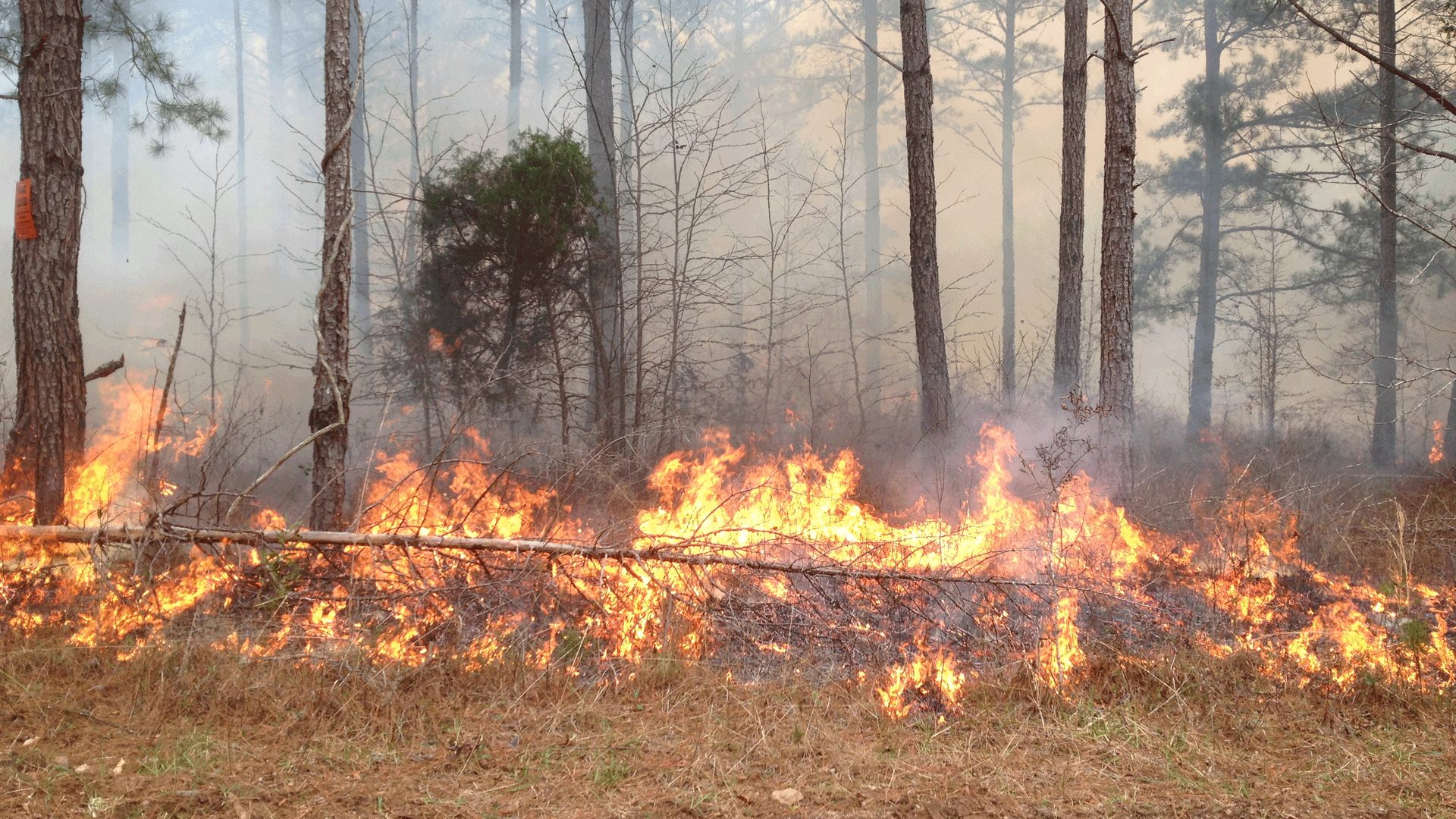
Control burns can lead to the growth of some great natural food sources on your property.
However, this can vary significantly depending on several factors, including the age of the bird, the location of the bird, and the time of year. For example, young poults experiencing a rapid period of growth require a diet much higher in protein than their adult counterparts. Diets can also vary significantly based on the the state or region in which a turkey lives. Birds in highly forested areas such as much of the eastern U.S. rely heavily on mast crops — specifically acorns — to survive. In the agricultural lands of the midwest, birds can rely heavily on leftovers from those crops, as well as other seed-producing plants and forage. In fact, a Wisconsin study of 100 hunter-harvested birds revealed a diet consisting of 54 percent waste grains and 27 percent native plants. Regardless of where the bird lives, the time of year plays a big role in what food sources turkeys will key in on, and that is how we’ll break down this article — by season.
How a Turkey Feeds
Before we get into what natural foods wild turkeys prefer to eat, I think it’s important to have an understanding of how they eat, as this will give you a little more insight into their food selection. Like chickens, turkeys have an enlarged area of the esophagus called a crop. The crop temporarily stores food, allowing turkeys to quickly consume large amounts of food, up to a pound or more at a time. While in the crop, the food is softened before entering the gizzard. The gizzard is a muscular part of the stomach that can grind extremely hard foods, allowing the birds to digest things like acorns, pecans and even hickory nuts. In order for the gizzard to operate efficiently, turkey often swallow grit to aid in the grinding process.
Now that you understand how a turkey consumes and digests its food, let’s take a look at exactly which foods birds key in on by season.
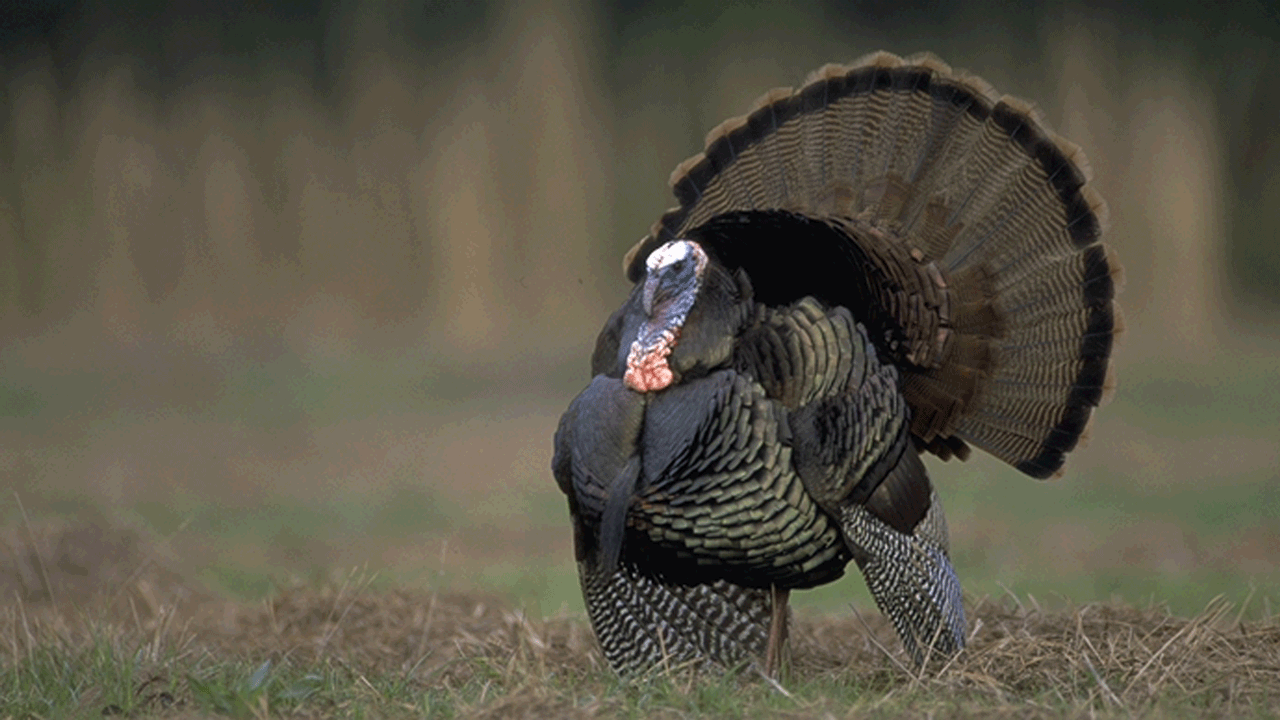
Knowing when and where a turkey feeds makes a world of difference in your hunting and management plan for the birds on your property.
Natural Food Sources for Turkeys Throughout the Year
SPRING
As temperatures rise in the spring, turkeys will continue scratching through forested areas in search of any remaining nuts and seeds. As soon as the fresh shoots of native grasses and forbs begin to emerge from the ground, turkeys will quickly turn their attention to those. This is also the time of year when insects will begin showing back up, providing another nutritious food source. As spring progresses, food becomes more abundant in the form of grass and weed seeds, and the breeding — and feeding — cycle starts all over.
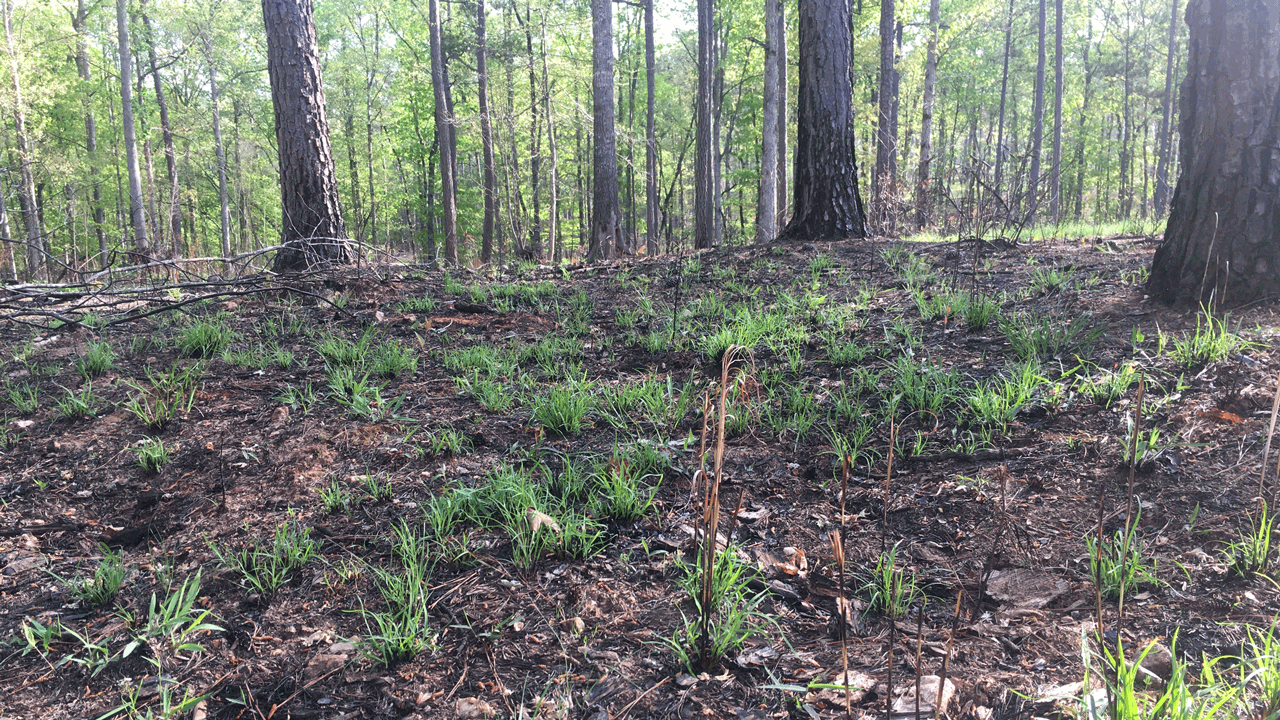
Natural food sources for turkeys coming on after a controlled burn.
SUMMER
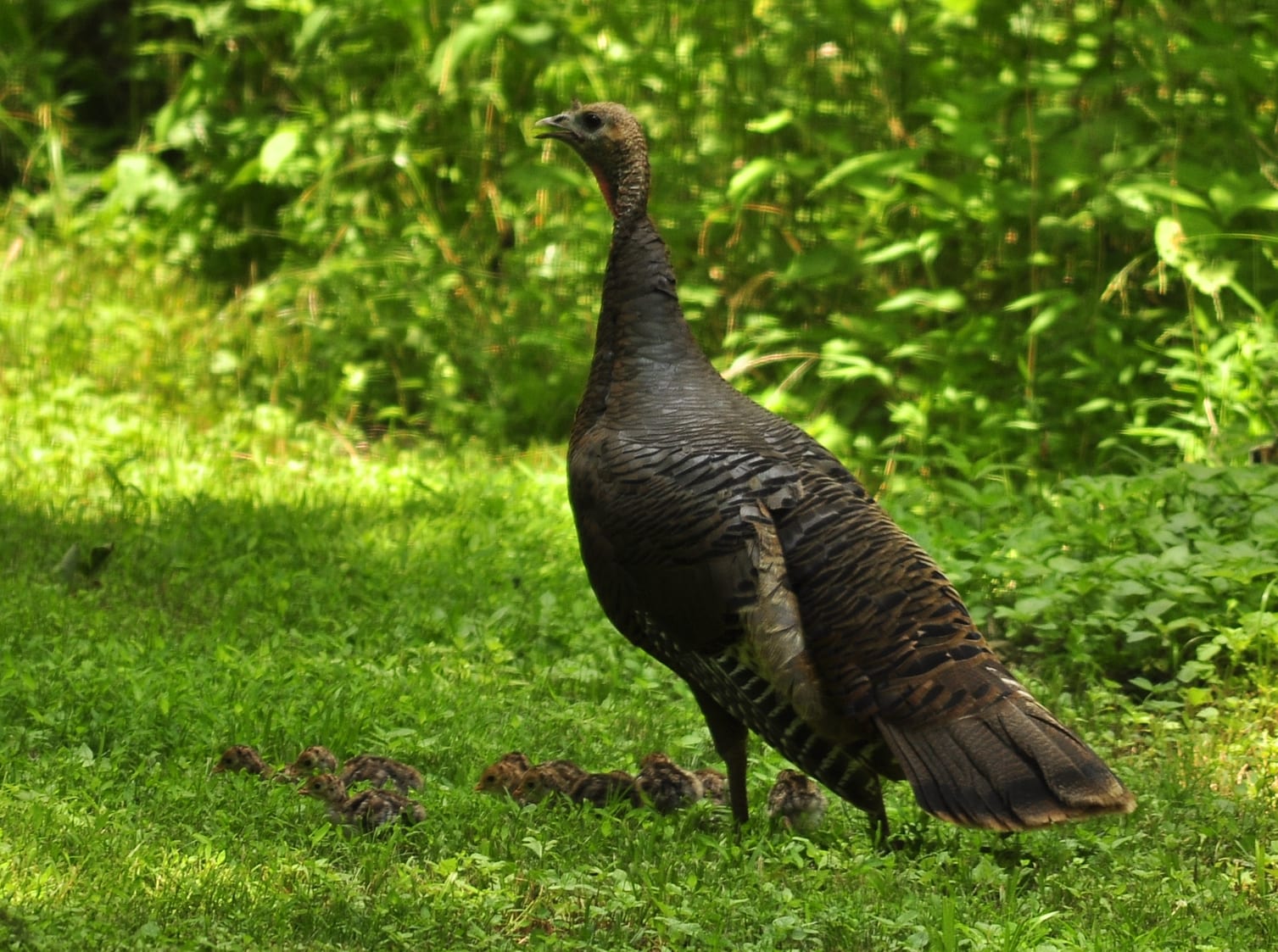
Much of a turkey poult’s diet consists of insects, providing protein critical for it’s rapid growth.
It may seem a little odd to start our discussion of turkey foods in the summer, but late spring to early summer is when many poults are hatching across the U.S. As I mentioned earlier, those young, rapidly growing poults need lots of protein, meaning they will feed heavily on insects to get through their first several weeks of life. In this early stage of their life, they can be found foraging for grasshoppers, caterpillars, spiders, snails and worms just to name a few. They’ve even been known to snack on lizards and salamanders along the way.
As the young poults grow, they’ll slowly begin to depend less on insects and more on various types of plant matter. In the summer, that means soft mast like blackberries and raspberries, grapes, wild cherries, crabapples and huckleberries. In addition to soft mast, turkeys will feed on a variety of green grasses and forbs, as well as the seed heads of many annual and perennial weeds.
FALL
While turkeys will continue to feed on available grasses and forbs this time of year, hard mast is the dominant fall food source across much of the turkey’s range. This includes the acorns of both white and red oaks, as well as beech and hickory nuts. In fact, beech nuts are highly preferred by wild turkeys as they are nutritious and easy to digest, though not as commonly available as acorns.
Soft mast can still be important this time of year, as well. Berries from sumac, spicebush, hackberry, dogwood and even poison ivy are readily consumed. Although grapes, blackberries, persimmons and other soft mast may have dropped and rotted by later in the fall, turkeys will continue to scratch around those plant locations to get any remaining seeds that weren’t consumed. In the midwest, agricultural fields like wheat, sunflower, sorghum and corn can become extremely important to foraging flocks of turkeys.
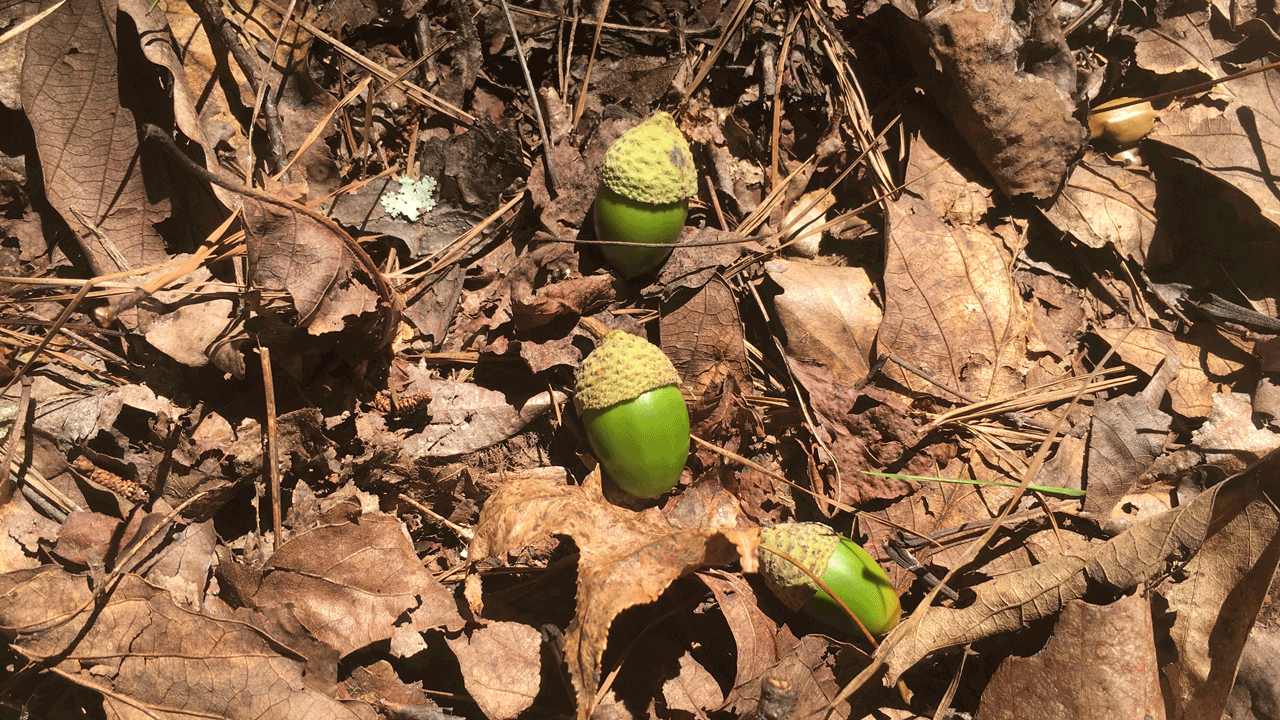
In forested areas, hard mast like acorns can provide a valuable food source throughout the fall and winter months.
WINTER
As fall turns into winter, hard mast continues to be an important food resource for turkeys. White oak acorns are typically the first to disappear, as they are more readily consumed by deer and tend to break down quickly. Red oak acorns, on the other hand, persist much longer because of their higher levels of tannic acid, providing a great natural food source for turkeys throughout the winter months. Turkeys will also continue scratching the forest floor for leftover mast and seeds. In areas with heavy snow cover, the birds will feed on the needles of white pine and hemlock, as well as on mosses, lichen, and the buds and stems of various hardwoods.
Natural Food Sources for Turkeys – Conclusion
Any turkey hunter can occasionally locate a turkey on the roost and deliver just the right calls to put a bird in the game bag. But to consistently be successful, even when times get tough, you have to have a firm grasp on the habits of a wild turkey — and much of those habits revolve around food. Learn what foods turkeys are focusing on at any given time, and you’ll be much more likely to consistently fill your turkey tags.

 By
By 



